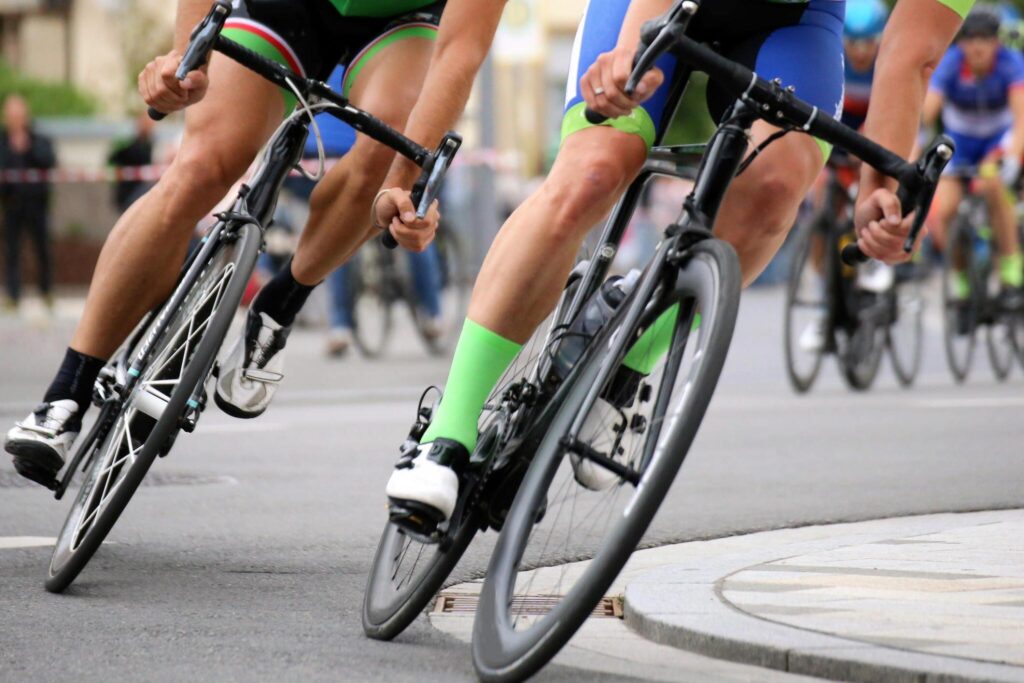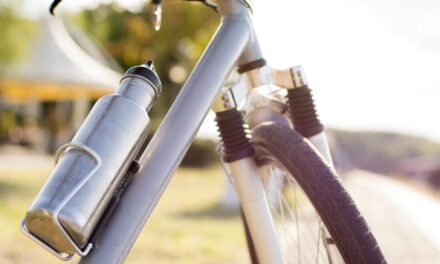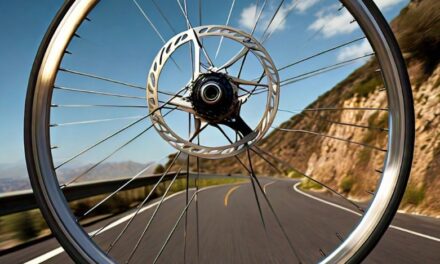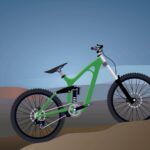For the dedicated cyclist, a sport bicycle isn’t just a mode of transportation, it’s an extension of your body, a machine meticulously tuned to deliver peak performance. However, even the most sophisticated machine needs regular care to function flawlessly. Here at [Company Name], we believe that understanding sport bicycle maintenance isn’t just about fixing problems, it’s about unlocking the bike’s full potential and maximizing your enjoyment on every ride.
This blog is designed to be your comprehensive guide to sport bicycle maintenance, catering to riders of all skill levels. We’ll delve into the intricacies of your bike’s systems, from the drivetrain and brakes to the suspension and wheels. We’ll provide step-by-step instructions for routine maintenance tasks like cleaning, lubrication, and basic adjustments, empowering you to take charge of your bike’s care.
But we don’t stop at the basics. We’ll also explore advanced topics like drivetrain optimization, suspension tuning, and troubleshooting common mechanical issues. Whether you’re a seasoned cyclist seeking to refine your bike’s performance or a new rider eager to learn the ropes, this blog will equip you with the knowledge and confidence to not only maintain your bike but truly understand it. By demystifying the mechanics behind your two-wheeled companion, we’ll help you ride smoother, ride stronger, and unlock the true potential hidden within your sport bicycle.
Sport Bicycle Maintenance: Ride Smooth, Ride Long
This comprehensive guide will walk you through the key aspects of sport bicycle maintenance, from basic cleaning to more advanced procedures. Whether you’re a seasoned cyclist or new to the sport, this guide will equip you with the knowledge to keep your bike in top condition.

Table of Contents
Understanding Your Sport Bicycle
Before diving into maintenance, it’s crucial to familiarize yourself with the main components of your sport bicycle:
- Frame: The bike’s core structure, which holds everything together.
- Wheels: Comprising the rims, spokes, hubs, and tires, these are essential for movement.
- Drivetrain: Includes the pedals, cranks, chain, chainrings, cassette, and derailleurs, responsible for propelling the bike forward.
- Brakes: These are vital for safety, allowing you to slow down or come to a stop.
- Suspension: Found on some sport bicycles, especially mountain bikes, to absorb shock.
- Cockpit: Consists of the handlebars, stem, and seat, which provide control and comfort.
Regular Maintenance Schedule
A well-maintained bicycle can significantly enhance your cycling experience. Here’s a maintenance schedule to keep your bike in peak condition:
- Daily/Every Ride: Check tire pressure, brakes, and quick-release levers. Wipe down the bike if it’s dirty.
- Weekly: Clean the bike more thoroughly, check the drivetrain for wear, and lubricate the chain.
- Monthly: Check brake pads, cables, and housing for wear. Inspect the condition of the tires, spokes, and tighten any loose bolts.
- Every 3-6 Months: Deep clean the drivetrain, including the chain, cassette, and derailleurs. Check the wheel trueness and adjust if necessary. Replace worn brake pads and cables.
- Annually: Consider a professional tune-up. This should include checking the bottom bracket, headset bearings, and hub bearings. It’s also a good time to replace the chain if it’s worn.
Cleaning Your Bike
Regular cleaning is the cornerstone of bicycle maintenance. Here’s how to properly clean your bike:
- Prep: Rinse your bike with water to remove any loose dirt.
- Wash: Use a bike-specific cleaner or mild soap and water with a soft brush or sponge to clean the frame, wheels, and components. High-pressure washers should be avoided since they can push water into bearings.
- Drivetrain: Use a degreaser on the chain, cassette, and derailleurs. A chain cleaning tool can be very effective here.
- Rinse & Dry: Rinse the bike with low-pressure water and dry it thoroughly to prevent rust.
- Lubricate: Once dry, apply lubricant to the chain, derailleurs, and any other moving parts.

Drivetrain Maintenance
The drivetrain is a critical component of your sport bicycle, requiring regular maintenance to function smoothly:
- Lubricating the Chain: Use a quality bike lubricant. Apply it to each chain link while turning the pedals backward. Wipe off excess lubricant to avoid attracting dirt.
- Checking for Wear: Use a chain checker tool to measure chain wear. Replace the chain if it’s stretched to prevent damage to other drivetrain components.
- Cleaning: Regularly clean your drivetrain with a degreaser and a brush to remove built-up grime.
Brake Maintenance
Properly functioning brakes are essential for safety. Here’s how to maintain them:
- Brake Pads: Check for wear and replace if the pads are worn down to the manufacturer’s recommended limit.
- Cables and Housing: Inspect for fraying or corrosion and replace as needed.
- Disc Brakes: For bikes with disc brakes, check the rotor for wear and alignment. Use isopropyl alcohol to clean the rotors.
Wheel and Tire Maintenance
Wheels and tires directly impact your bike’s performance and comfort:
- Tire Pressure: Regularly check and adjust tire pressure according to the recommended PSI found on the tire sidewall.
- Inspecting Tires: Look for cuts, punctures, or wear in the tread and sidewalls. Replace tires if they are damaged or worn.
- Truing Wheels: Check for wobbles or hops in the wheels. Use a truing stand and spoke wrench to adjust the tension of the spokes if necessary.
Suspension Maintenance
If your sport bicycle has suspension, it will require special attention:
- Regular Cleaning: Keep the stanchions clean to prevent dirt from entering the seals.
- Lubrication: Some suspension systems have your sport bicycle:
- Frame: The bike’s backbone, connecting all components.
- Wheels: Consist of rims, spokes, and hubs.
- Drivetrain: Includes the pedals, crankset, chain, cassette (or freewheel), derailleurs, and shifters.
- Brakes: Can be rim brakes or disc brakes.
- Suspension: Found primarily on mountain bikes for absorbing impact.
- Cockpit: Comprises the handlebars, stem, saddle, and seatpost.
Regular Maintenance Schedule
Consistency is key when it comes to bicycle maintenance. Here’s a basic schedule to follow:
- After Every Ride: Wipe down your bike and inspect for any visible damage.
- Weekly: Clean the drivetrain and check tire pressure.
- Monthly: Inspect brake pads, cables, and housing; check for wear and tension.
- Every 3-6 Months: Perform a detailed cleaning and lubrication of all moving parts, check wheel true, and adjust bearings.
- Annually: Consider a professional tune-up to address any complex adjustments or repairs.
Cleaning Your Bike
Keeping your bike clean is fundamental. Dirt and grime can accelerate wear on your bike’s components and affect its performance.
- Rinse: Begin with a low-pressure rinse to remove surface dirt.
- Clean the Drivetrain: Use a degreaser on the chain, cassette, and derailleurs. A dedicated brush can help remove grime.
- Soap: Apply a bike-specific soap with a soft brush or sponge to clean the frame, wheels, and components.
- Rinse Again: Rinse off the soap with low-pressure water.
- Dry: Use a clean cloth to dry your bike. Avoid leaving it in direct sunlight for too long.
Drivetrain Maintenance
The drivetrain is your bike’s heart. Keeping it clean and lubricated is essential for smooth operation and shifting.
- Cleaning: After degreasing, ensure all components are thoroughly clean and dry.
- Lubrication: Apply a quality bike lubricant to the chain. Avoid over-lubrication as it can attract dirt.
- Inspection: Regularly check for wear on the chain, cassette, and chainrings. A worn chain can quickly lead to more expensive component wear.

Brake Maintenance
Effective brakes are crucial for safety. Both rim brakes and disc brakes require regular inspection and adjustment.
- Rim Brakes: Check brake pads for wear and ensure they align properly with the rim. Adjust cable tension if the brake lever pull is too long or short.
- Disc Brakes: Inspect brake pads and rotors for wear. Hydraulic systems should be bled if the brake lever feels spongy.
Wheel and Tire Maintenance
Wheels should spin freely and be true (straight). Tires should be in good condition and inflated to the recommended pressure.
- Inspecting Tires: Look for cuts, cracks, or bald spots. Replace tires if necessary.
- Checking Pressure: Use a quality bike pump with a pressure gauge to ensure tires are inflated correctly.
- Truing Wheels: This requires a truing stand and some experience. If your wheels are significantly out of true, consider taking them to a professional.
Suspension Maintenance
If your sport bicycle has suspension, regular maintenance is required to keep it functioning correctly.
- Cleaning: Keep the stanchions (upper tubes) clean and free of debris.
- Lubrication: Use suspension-specific lubricants if recommended by the manufacturer.
- Service: Periodic professional service is necessary to replace seals and fluids.
Cockpit Maintenance
Ensure your handlebars, stem, saddle, and seatpost are securely fastened and correctly adjusted to your riding position.
- Handlebars and Stem: Check for proper alignment and tighten bolts to the manufacturer’s specifications.
- Saddle and Seatpost: Ensure the saddle is level and the seatpost is secure. Apply a carbon assembly compound if either component is carbon.
Advanced Maintenance
Some maintenance tasks require specialized tools and knowledge:
- Bearing Service: Hubs, bottom brackets, and headsets contain bearings that may need adjustment or replacement.
- Gear Adjustment: Derailleurs require precise adjustment for smooth shifting. This often requires a practiced hand.
- Hydraulic Brake Service: Hydraulic disc brakes need periodic bleeding to remove air bubbles from the system.
Conclusion
Regular maintenance is essential for keeping your sport bicycle in top condition. By following this guide, you can ensure your bike performs well, lasts longer, and remains safe to ride. Remember, if you encounter a maintenance issue that’s beyond your skill level, don’t hesitate to seek professional help. Happy cycling!
Related guides :










